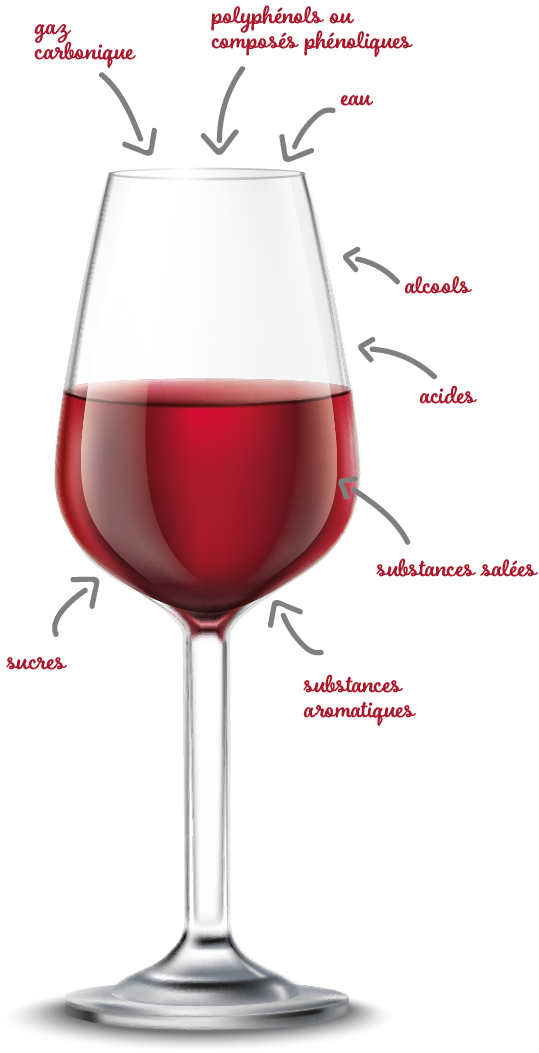The water
Wine is composed of between 80 and 90% water of plant origin (from fruit), depending on its alcoholic strength.
Alcohols
The most important is ethyl alcohol, produced by the transformation of sugars by yeast, which represents between 8 and 20% depending on the type of wine produced. Alcohols are responsible for the sensation of warmth and, along with sugars, contribute to the mellowness, fatness and viscosity of wine.
Acids
Acids come from two sources: the grape or fermentation. The former are found in the form of tartaric or citric acid, the latter as lactic or acetic acid. Acids are the source of the acidic taste, influence the color and brightness of the wine, and may in some cases have a specific aroma (acetic acid).
Polyphenols or phenolic compounds
These compounds are found mainly in red wines, and to a lesser extent in white and rosé wines. There are two categories of polyphenols:
Colorants: flavonoids are responsible for yellow color, and anthocyanins for red color.
Tannins: found in grape skins, seeds and wood. These phenolic compounds are responsible for the color and structure of wines, while providing a tactile sensation known as astringency. In high doses, they create a bitter sensation.
Sugars
Sugars are found in all wines, whether dry or sweet, red, rosé or white. They come in the form of glucose or fructose, and their quantity varies according to the type of wine, from 2g/l in dry wines to... 300g/l in sweet wines. They contribute to viscosity, mellowness, fat and sweetness.
Salty substances
Certain elements, such as potassium and sodium, present in very small doses, would impart a salty taste if they were not masked by sugar and alcohol.
Carbon dioxide
All wines contain a variable amount of carbon dioxide, which becomes perceptible to humans at 500 or 600mg/l, and visible - in the form of a pearl - at 1000mg/l. In the first case, it provides a tactile tingling sensation on the tongue. It contributes to the wine's freshness, accentuates the acidic sensation and enhances the intensity of the aroma.
Aromatic substances
There are many aromatic substances, not all of which have yet been identified. Science is constantly discovering new aromatic substances. They are responsible for the aromas in wine and contribute to its richness and complexity. Alcohols, esters, fatty acids or aldehydes are present in small doses and are responsible for odors comparable to those found in nature. For example, cinnamic aldehyde provides the cinnamon note, phenylethyl alcohol the rose note, and so on. The combination of several of these aromas influences the aromatic palette.